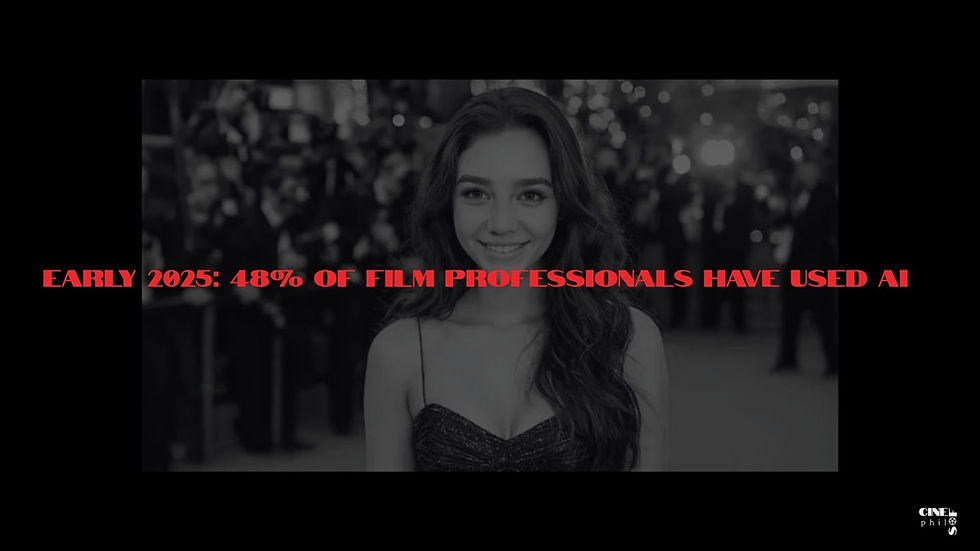The Rise of Romantasy: 50 Shades of Storytelling and Sexuality – Feminism Under the Twilight Gaze
- Sofia R. Willcox

- Feb 4
- 4 min read
2025 marks the 10th anniversary of Fifty Shades of Grey (Sam Taylor-Johnson, 2010), a controversial viral phenomenon, while Twilight (Catherine Hardwicke, 2008) recently turned 15. In nearly two decades, these franchises helped propel romantasy — a blend of romance and fantasy — into mainstream popularity, fueled by BookTok and female writers like Sarah J. Maas, Stephanie Garber, and Rebecca Ross. This raises a question: what do these interconnected cultural phenomena reveal about the shifting power of the female gaze?
The term "female gaze" evolves from film theorist Laura Mulvey's concept of the "male gaze," in which she examined how heterosexual male perspectives often dominate film, shaping camera angles, narratives, and character depictions that sexualise or fetishise women. In contrast, the "female gaze" refers to the portrayal of the world from a female perspective in visual media, with the assumption that the audience shares these desires. On one hand, it challenges traditional gender norms by reshaping expectations of women's thoughts, behaviours, and emotions. On the other hand, it risks patronising women's experiences by reducing them to a single, one-size-fits-all narrative, neglecting the individuality and diversity within us.
This phenomenon can be seen as a means of escape, offering comforting narratives that allow us to disconnect from our daily realities for a few hours. However, it also carries a subtle unawareness of the power behind it in an unapologetic way. These stories address female sexuality, which serves as a catalyst for many individuals' sexual experiences. Meanwhile, as we witness the global rise of conservative and far-right movements, these issues have become central to their agendas, sparking debates over the agency and autonomy of women’s bodies, along with increasingly visible disputes surrounding reproductive rights. These debates are often driven by religious or political institutions, which have historically criminalised abortion and pushed women towards dangerous, clandestine clinics.
Beyond that, whether in the West or the East, society encourages girls to keep their legs closed.
Teenagers and young adults, in order to avoid slut-shaming, are often expected to conform. Their sexual awakenings and experiences are frequently met with hate and condemnation from parents and religious institutions. At the same time, teenage icons become targets of envy and hostility from other males, often masked by homophobia. Just look at the #TeamJacob versus #TeamEdward debates and the parodies that followed. Beyond what we wear, it’s about how we dare to assert our right to be treated fairly. The female body has consistently been 'othered' throughout history, subjected to the indoctrination of toxic and restrictive ideals. Each era brings a new set of beauty standards, which lead to self-esteem issues, eating disorders, and body image struggles.
Meanwhile, older women are expected to quietly fade away, despite being a significant demographic with a longer life expectancy than men. They are present in statistics and the news, but society often overlooks their issues. They become invisible ghosts, burdened with hunched backs, carrying the weight of generations and the baggage of a lifetime. Women often live longer than men, yet media screens frequently fail to acknowledge their longevity.
Even though the second wave of feminism in Europe and the US saw the emergence of reproductive rights and the legalisation of abortion, highlighted by the U.S. Supreme Court's ruling on Roe v. Wade (1973), it is important to remember that intersectional feminism was still in its early stages. The 1960s also saw the rise of Mary Quant's miniskirt, which played a role in the feminist movement by challenging the notion that women’s bodies should be hidden and controlled.
Romantasy provides "bold heroines" and "strong yet nuanced female characters," the opposite of the damsel in distress or Mary Sue archetypes (like Bella Swan, from Twilight and Anastasia Steele from 50 Shades of Grey) — characters who are portrayed as free of weaknesses or character flaws. This character type has gained a pejorative reputation in fan communities, with the label "Mary Sue" often applied to any heroine deemed unrealistically capable. In Paula Smith's 1973 parody short story A Trekkie's Tale, the character Mary Sue was created to satirise the idealised female characters prevalent in Star Trek fan fiction at the time. In contrast, female roles in Game of Thrones often serve the male gaze, while in The Lord of the Rings and The Hobbit, they are largely non-existent.
A key point about this romantasy is the imposition of Eurocentric myths on other minorities, almost akin to cultural colonisation. Although these stories adopt universal and relatable archetypes, they marginalise some overlooked communities that are rich in diversity. A few less mainstream, more indie authors are changing that, such as A.G. Porter, Mikayla D. Hornedo, Angela Montoya, Monica Amore, Luna Alva, Stephanie Light, Melissa Cassio, Aleera Anaya Ceres, among others.
Additionally, there’s the issue of the heteronormativity intertwined with these narratives, a reminder of how, since colonialism, Indigenous sexual practices and gender identities were persecuted and erased. Western powers imposed their religion and beliefs upon these communities, not to mention the violence that accompanied this process.
Romantasy might fall into the trap of cultural elitism, sinking alongside Twilight and Fifty Shades of Grey. This belief suggests that certain cultural practices, art forms, and intellectual pursuits are superior to others, leading to a hierarchy of cultural value where some forms of culture are deemed more significant than others. This elitism is perhaps intertwined with patriarchy, reinforcing the idea that some cultural expressions, particularly those crafted by women to women, are considered lesser or less worthy of serious consideration.
Once upon a time, I was a ho-peful of a better future...Future is female!




Comments